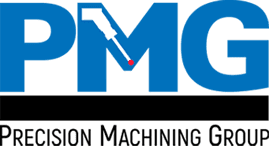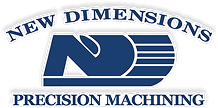The Future of Aerospace Forgings

Over the past decade, the wild blue yonder has proven quite favorable to aerospace forgings and the aerospace industry in general. Despite recent troubles at Boeing, there has nevertheless been an increasing demand for civilian air travel, a steady resurgence in the business jet sector, and a multi-year backlog for new aircraft orders from major commercial airlines.
From 2023 to 2024, the market for aerospace forgings grew 9.3%, from $31.49 billion to $34.41 billion. Experts anticipate that this expansion will continue at a compound annual growth rate of 8%.
The industry’s growth has remained exceptionally steadfast but underneath the headline data are signs that the industry is undergoing shifts in a few key areas. With our new AS9100 certification, Anchor Harvey has been looking at these areas and the role we will be playing in forging the future of aerospace.
COMMON AEROSPACE FORGINGS
| Fastener Rails: Structural supports for securing fasteners used in aircraft assembly. | Special Grades: High-performance materials with enhanced properties tailored for aerospace applications. |
|---|---|
| Turbine Rings: Circular components in jet engines that maintain turbine blade alignment and stability. | Bearing Rings: Precision rings used in bearings to reduce friction and support rotational components. |
| Valve Body: Core housing for fluid control systems, managing pressure and flow in aerospace systems. | Seat Supports: Structural elements ensuring secure and stable aircraft seating. |
| Brake Calipers: High-strength components that apply braking force to aircraft wheels. | Rotor Blade Components: Critical parts in engine and helicopter rotor systems for efficient airflow and lift. |
| Cross-Rolled Sheets & Plates: Lightweight, high-strength materials used for aerospace structures. | Usage Structural Parts: Key elements providing strength and integrity to the aircraft’s main body. |
| Runway Light Covers: Protective enclosures for lighting systems ensuring visibility during landing and takeoff. | Actuators: Mechanisms responsible for moving or controlling aircraft systems and surfaces. |
Technological Innovation
Remarkably innovative improvements in operating efficiency, advanced avionics, and ultramodern next-generation platforms are already in production. Airbus’ A320neo and Boeing’s 787, for example, are all driving-increased customer demand. New technologies like these and others already on the horizon require lightweight components made to exacting specifications with state-of-the-art aerospace forging technology.
The latest innovations in aerospace, while extraordinary, have nevertheless created challenges across the supply chain as many less experienced manufacturers have struggled to make the changes necessary to keep up.
With over a quarter-century of experience working with leading aerospace OEMs and aviation manufacturers, Anchor Harvey is already expertly adept at meeting the exacting demands for the next generation of forging technology. We pride ourselves on being a data-driven aluminum forging company with a century-long legacy in precision manufacturing, engineering, and supply chain management.
We do not doubt that no matter what innovative challenges the future may hold, Anchor Harvey will rise to meet them with aplomb and emerge triumphantly.
New Materials
With the introduction of new, lightweight materials, aerospace forging will adapt to accommodate. Advanced titanium alloys, aluminum-lithium, and other materials with a high strength-to-weight ratio will push manufacturers to develop more efficient forging techniques.
Additionally, innovative composites are being integrated into forging processes. These materials combine the strength of traditional metal with the ultralight properties of polymers and carbon fibers, which meet the rigorous requirements of aerospace applications like landing gears, engineer parts, and other structural elements.
As aerospace forging companies incorporate these new materials, they will help drive the next generation of engineering innovation.
Aftermarket Supply
With a years-long backlog for new aircraft orders—and the rising costs of those new orders—many commercial airlines have been turning their focus toward establishing stronger relationships with MRO facilities and suppliers of aftermarket aerospace forgings. Even military operators are flying aging fleets longer, further bolstering the demand for aftermarket aerospace components. Favorable government policies, such as exemption from customs and duties, have also helped propel the growth of the aerospace forging industry.
As a well-established and highly-regarded supplier of aftermarket parts in the aerospace market—as well as numerous other markets such as the specialty automotive, motorsports and construction—Anchor Harvey has a long history of consistently meeting the demand for our forged components from our partners.
Known for their impeccable quality, Anchor Harvey’s forged aluminum components are dedicated to keeping planes flying and operators in the air and our state-of-the-art facilities and built-in redundancies ensure that our partners get their forged components where they need them; when they need them.
Exploration
Since ending its space shuttle program in 2011, NASA has relied exclusively on Russia to ferry its astronauts to and from the International Space Station. But the emergence and rapid achievements of private spaceflight companies have pushed open the door to a new era of exploration.
SpaceX’s Crew Dragon capsule and Boeing’s Starliner are racing to fly NASA astronauts on US-made spacecraft for the first time in nearly a decade while other companies, such as Blue Origin and Virgin Galactic, follow closely behind. The coming decades in the aerospace industry will be in no small part defined by explorations of the cosmos and the inherent challenges and opportunities therein.
At Anchor Harvey, we know a few things about innovation; from delivering the first forgings for use in the automotive industry to developing critical components for use in the United States’ original nuclear power plants. With a 100-year history of innovation, Anchor Harvey has never been afraid to explore new opportunities and conquer new challenges.
Wherever the future of the aerospace industry goes—to the moon, the stars, or to the planets beyond—you can rest assured that Anchor Harvey’s aerospace forgings will be there.







